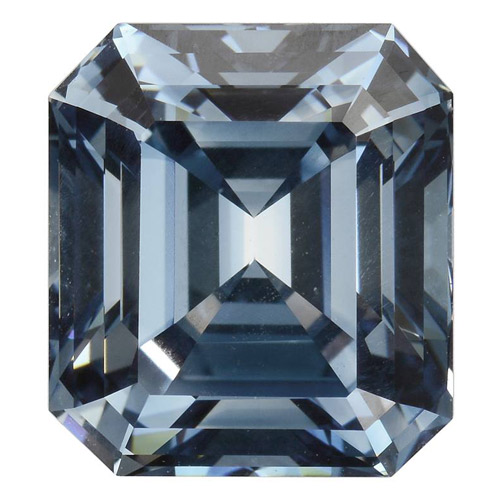
A recently graded synthetic stone - the largest of its kind to be studied by the organization - exemplifies how quickly synthetic diamond technology is progressing and the increasing importance of identification.

A recently graded synthetic stone - the largest of its kind to be studied by the organization - exemplifies how quickly synthetic diamond technology is progressing and the increasing importance of identification.
The stone, which was examined at the Gemological Institute of America's (GIA's) New York laboratory, was supplied by Russian manufacturer New Diamond Technology (NDT).
"Examination of this large (type) IIb synthetic diamond, combined with those previously reported from NDT, illustrates the rapid progress in HPHT (high pressure, high temperature) growth technologies," the GIA report stated. "This is a development that will eventually impact the jewellery industry."
As previously reported by Jeweller, the trading of undisclosed synthetic diamonds has been an increasing concern for the industry.
While in the past, nascent synthetic diamond technology presented a number of limitations – such as size – which made it easier to distinguish between natural and synthetic stones, the GIA's report seemingly indicates the differences are becoming more difficult to detect.
Grading results
At 5.03 carats, the emerald cut HPHT diamond was said to be the largest faceted blue synthetic stone the GIA had ever tested.
The synthetic diamond was graded as a fancy deep blue, with GIA New York's researchers commenting that the stone had no other color component, making it a "prized rarity" within the type IIb category.
When examined more closely, however, the diamond reportedly showed tell-tale signs of its HPHT origins. These included "faint but sharp color zoning" resulting from uneven impurity incorporation and a cuboctahedral growth pattern, among other indicators.
Despite this, the stone was found to have VS1 clarity, "only very small metallic inclusions" and "an extremely low concentration of optical defects".
The GIA report concluded that "as the size and quality of synthetic diamonds improve, careful identification is essential".
The largest reported faceted colorless HPHT-grown synthetic diamond is believed to be the 10.02-carat square emerald cut stone that was created by the International Gemological Institute's Hong Kong branch in May 2015.